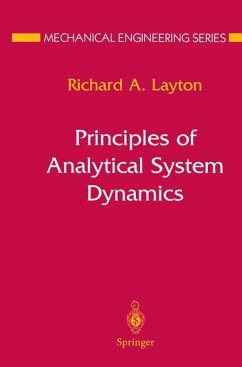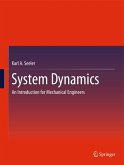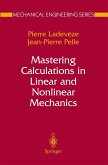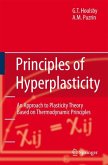This book describes a novel approach to analytical mechanics that uses differential-algebraic equations, which, unlike the usual approach via ordinary differential equations, provides a direct connection to numerical methods and avoids the cumbersome graphical methods that are often needed in analyzing systems; it is also eminently suited for constrained nonlinear models. Using energy as a unifying concept and systems theory as a unifying theme, the book addresses the foundations of such disciplines as mechatronics, concurrent engineering, and systems integration. The systems considered include mechanical, thermal, electrical, and fluid elements; only discrete systems are considered. The reader is expected to be familiar with the fundamentals of engineering mechanics, but no detailed knowledge of analytical mechanics, system dynamics, or variational calculus is required. The treatment is thus accessible to advanced undergraduates, and the interdisciplinary approach should be of interest not only to academic engineers and physicists, but also to practicing engineers and applied mathematicians. The text begins with an overview of system dynamics: classification and representation of motion, constraints on motion, virtual work and variational concepts. It then turns to the Lagrangian and Hamiltonian equations of motion, expressed as differential-algebraic equations. A subsequent chapter treats the dual, or complementary equations of motion, and the book concludes with a chapter on modeling and simulation, including methods of numerical solution.
Mechanical engineering, an engineering discipline borne of the needs of the industrial revolution, is once again asked to do its substantial share in the call for industrial renewal. The general call is urgent as we face profound is sues of productivity and competitiveness that require engineering solutions, among others. The Mechanical Engineering Series features graduate texts and research monographs intended to address the need for information in contemporary areas of mechanical engineering. The series is conceived as a comprehensive one that covers a broad range of concentrations important to mechanical engineering graduate education and research. We are fortunate to have a distinguished roster of consult ing editors on the advisory board, each an expert in one of the areas of concentration. The names of the consulting editors are listed on the next page of this volume. The areas of concentration are applied mechanics, biomechanics, computational mechanics, dynamic systems and control, en ergetics, mechanics of materials, processing, thermal science, and tribology. Fred Leckie, our consulting editor for applied mechanics and I are pleased to present this volume in the Series: Principles of Analytical System Dy namics, by Richard A. Layton. The selection of this volume underscores again the interest of the Mechanical Engineering Series to provide our read ers with topical monographs as well as graduate texts in a wide variety of fields.
Mechanical engineering, an engineering discipline borne of the needs of the industrial revolution, is once again asked to do its substantial share in the call for industrial renewal. The general call is urgent as we face profound is sues of productivity and competitiveness that require engineering solutions, among others. The Mechanical Engineering Series features graduate texts and research monographs intended to address the need for information in contemporary areas of mechanical engineering. The series is conceived as a comprehensive one that covers a broad range of concentrations important to mechanical engineering graduate education and research. We are fortunate to have a distinguished roster of consult ing editors on the advisory board, each an expert in one of the areas of concentration. The names of the consulting editors are listed on the next page of this volume. The areas of concentration are applied mechanics, biomechanics, computational mechanics, dynamic systems and control, en ergetics, mechanics of materials, processing, thermal science, and tribology. Fred Leckie, our consulting editor for applied mechanics and I are pleased to present this volume in the Series: Principles of Analytical System Dy namics, by Richard A. Layton. The selection of this volume underscores again the interest of the Mechanical Engineering Series to provide our read ers with topical monographs as well as graduate texts in a wide variety of fields.








